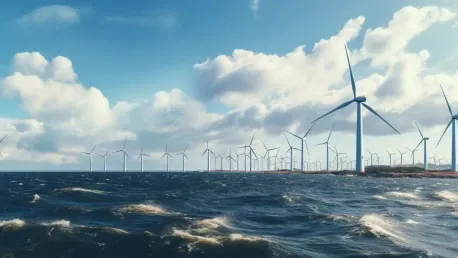The rapid growth of the offshore wind energy sector has sparked discussions on whether these wind sites can simultaneously balance economic benefits and socio-environmental concerns. Coastal regions are being eyed for their potential to harness wind energy, promising a substantial contribution to renewable energy generation. However, the challenge lies in ensuring that offshore wind farms can cater to the developers’ techno-economic interests while also addressing the concerns of a broad range of stakeholders, including local communities, environmentalists, and commercial industries. The recent spatial multi-criteria analysis conducted by Rudolph Santarromana and colleagues, as published in PNAS Nexus, emphasizes this balancing act. By exploring physical conditions alongside social acceptability factors like visual impact, fishing concerns, marine life, and vessel traffic, the analysis highlights a significant disparity between developer priorities and broader community needs.
Disparity Between Developer and Stakeholder Criteria
A critical finding of the multi-criteria analysis is the notable gap between areas deemed suitable from a developer’s techno-economic perspective and those acceptable to socio-environmental stakeholders. While 58% of potential offshore wind plant locations meet criteria for developers, only a mere 18% gain approval from a broader stakeholder perspective. This discrepancy underscores the need for a more integrated approach to site selection. The canceled Cape Wind project in Nantucket Sound serves as a prime example of this mismatch. Although the site was ideal for developer interests, it faced strong opposition due to its socio-environmental implications, leading to its eventual cancellation.
On the East Coast, pockets of consensus sites have been identified where both developer and stakeholder criteria overlap. These consensus areas, if developed appropriately, could generate up to 600 gigawatts of power, illustrating the significant potential for agreement in suitable sites. However, the situation on the West Coast is not as favorable. The deeper waters nearshore limit the areas of consensus to a mere 5 gigawatt potential. This limitation arises from the more challenging physical conditions present, making it harder to find mutually acceptable locations. Despite these challenges, innovative approaches like unmoored floating turbines and power-to-hydrogen solutions are being explored to expand suitable areas. Although these innovative technologies come with higher investment costs, they could ultimately bridge the gap in areas where traditional wind farms are not viable.
Importance of Consensus Areas and Smaller Projects
In Santarromana’s analysis, a compelling suggestion is for developers to prioritize consensus areas where techno-economic viability aligns with socio-environmental acceptability. Focusing on these consensus areas minimizes conflicts and maximizes the likelihood of project success. The study further emphasizes the importance of smaller project initiatives. Smaller-scale installations pose less uncertainty regarding their impacts and offer greater robustness and flexibility in different sites. Smaller projects can adapt more easily to diverse locations and conditions, reducing the risk of encountering significant opposition or unforeseen environmental impacts.
Furthermore, prioritizing areas where interests align can leverage investment tax credits to develop more socially and environmentally acceptable plants. This approach ensures that both developers and stakeholders benefit from the economic and environmental advantages of offshore wind energy. The current industry trend, however, leans towards larger and more ambitious projects. These projects are inherently more complex and face greater challenges in assessing and mitigating their impacts. While the pursuit of large-scale projects is driven by the desire for greater energy output and economies of scale, it often overlooks the nuanced needs and concerns of local communities and environmental stakeholders.
Balancing Feasibility with Environmental and Social Considerations
A critical finding from the multi-criteria analysis reveals a significant gap between areas suitable from a developer’s techno-economic perspective and those acceptable to socio-environmental stakeholders. While 58% of potential offshore wind farm sites meet developers’ criteria, only 18% gain broader stakeholder approval. This gap highlights the necessity for a more integrated site selection approach. The canceled Cape Wind project in Nantucket Sound exemplifies this mismatch. The site, though ideal for developers, faced strong opposition due to socio-environmental concerns, leading to its cancellation.
On the East Coast, there are areas where developer and stakeholder criteria align, potentially generating up to 600 gigawatts of power if developed properly. This demonstrates significant potential for agreement. However, the West Coast presents more challenges. The deeper waters nearshore offer only about 5 gigawatts of potential consensus sites, primarily due to the tough physical conditions, making it harder to find mutually acceptable locations. Despite this, innovative solutions like unmoored floating turbines and power-to-hydrogen technologies are being explored. Though these innovations come with higher costs, they could expand suitable locations where traditional wind farms aren’t practical.









